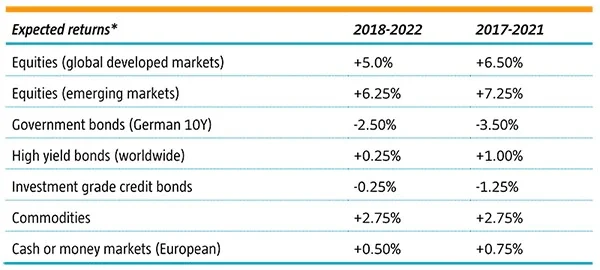Disclaimer
The information contained in the website is solely intended for professional investors. Some funds shown on this website fall outside the scope of the Dutch Act on the Financial Supervision (Wet op het financieel toezicht) and therefore do not (need to) have a license from the Authority for the Financial Markets (AFM).
The funds shown on this website may not be available in your country. Please select your country website (top right corner) to view more information.
Neither information nor any opinion expressed on the website constitutes a solicitation, an offer or a recommendation to buy, sell or dispose of any investment, to engage in any other transaction or to provide any investment advice or service. An investment in a Robeco product should only be made after reading the related legal documents such as management regulations, prospectuses, annual and semi-annual reports, which can be all be obtained free of charge at this website and at the Robeco offices in each country where Robeco has a presence.
By clicking Proceed I confirm that I am a professional investor and that I have read, understood and accept the terms of use for this website.
Robeco publishes Expected Returns 2018-2022: ‘Coming of age’
Rotterdam, 18 September 2017 – Robeco has published its annual Expected Returns report (2018-2022), a look at what investors can expect over the next five years. Robeco’s Investment Solutions department foresees lower returns on risky assets because of high valuation, which is expected to lead to lower returns compared to last year when it published its award winning report ‘It’s always darkest just before dawn − 2017-2021’.
Despite the fact that the earnings recession has ended, stock markets have continued to rise more than underlying earnings and credit spreads have tightened regardless of an underlying erosion of the credit quality, while high yield spreads have quickly recovered from the 2015 oil market scare. The main exception of an asset class that has become more attractive compared to last year is government bonds, but the improvement is too modest to warrant any enthusiasm just yet. In fact, government bonds are some of the most expensive assets available. Valuation isn’t a very reliable market timing mechanism, but it does play a role in a five-year timeframe, especially when central banks are expected to take their foot off the gas pedal.
Equities are expected to return less than before, with developed market stocks delivering 5% a year (down from 6.5%) and emerging markets equities gaining 6.25% (vs. 7.25% last year). At the same time, the outlook is less bearish on government bonds, with the benchmark German 10-year predicted to return -2.5% (vs. -3.5%) and high yield bonds delivering 0.25% (vs. 1.0%).

Lukas Daalder, Chief Investment Officer of Robeco’s Investment Solutions department: “The here and now is the main focus these days, however, we always maintain a long-term view, as the reality is that much of what preoccupies financial markets in the present will have been overshadowed by other concerns and opportunities before 2022 is upon us. On balance, we have lowered our outlook for most assets, and expect to see more volatility ahead. This may sound more negative than it is: the weighted returns for a well-diversified portfolio will actually decrease only slightly in our view.”
‘Coming of age’ has been chosen as the title, as the report explains that financial markets are entering a mature stage in their cycle, led by the eventual end of quantitative easing. This is foreseen to lead to lower returns on riskier assets, partly due to the arrival of an unavoidable recession. Perhaps few assets better symbolize ‘Coming of Age’ than the euro. ‘Born’ in digital form in 1999, the currency can be considered a true ‘digital native’, a term also used to describe the millennial generation. ‘Puberty’ (2011-2017) has been a wild ride and the question now is whether it will be able to develop into a well-behaved ‘adult’.
In addition to this five-year outlook, the report also covers five special topics, broadly related to the ‘Coming of age’ theme:
Secular stagnation (is a stagnating theory)
Eurozone (The future of the euro: to integrate or disintegrate?)
Origin of returns (Bonds are from Venus, equities are also from Venus)
Volatility (Getting back to ‘normal’)
Passification (There’s no one-size-fits-all for multi-assets)
The full report is available upon request, or can be downloaded here.
A video and an executive summary are also available.
*The medium-term influences correspond with our qualitative assessment of the valuation and macro influences described in Chapter 2 of the full document. Medium-term influences on equity-like returns are presented relative to developed equities. In line with the recommendations of the Dutch Association of Financial Analysts, the expected returns are geometric returns that are better suited to long investment horizons. Equity-like returns are in local currency. Bond returns are hedged to euro except for EMD which is the unhedged return in EUR. The 10Y bond return has been derived as follows: we assume the bond is sold each year and that a new 10-year bond is bought with the proceeds. In this way, we replicate a strategy in which investors retain their investment in the 10-year benchmark bond. Note that the return will vary for other strategies such as a buy-and-hold strategy. The value of your investments may fluctuate, and past performance is no guarantee of future results.
